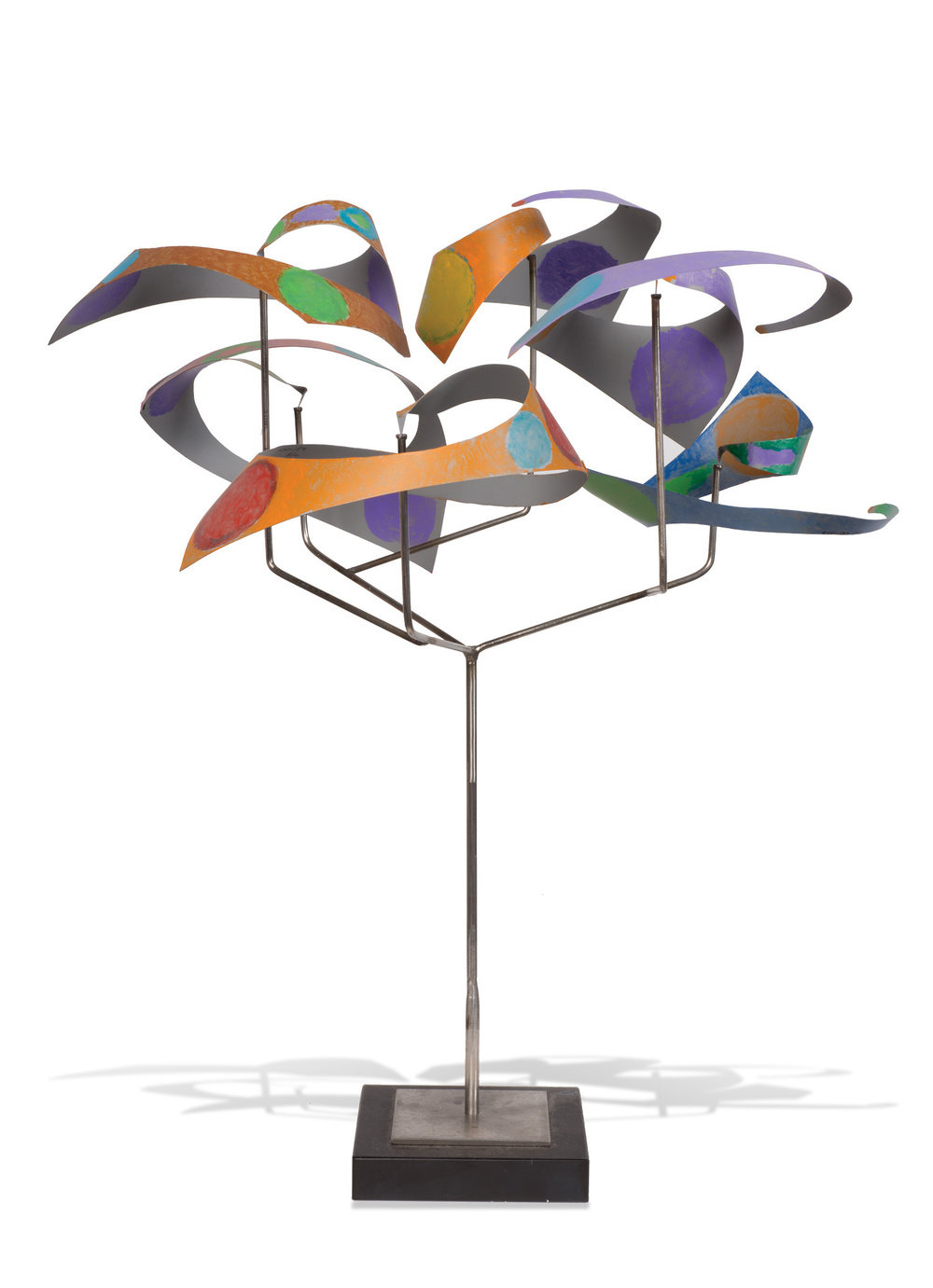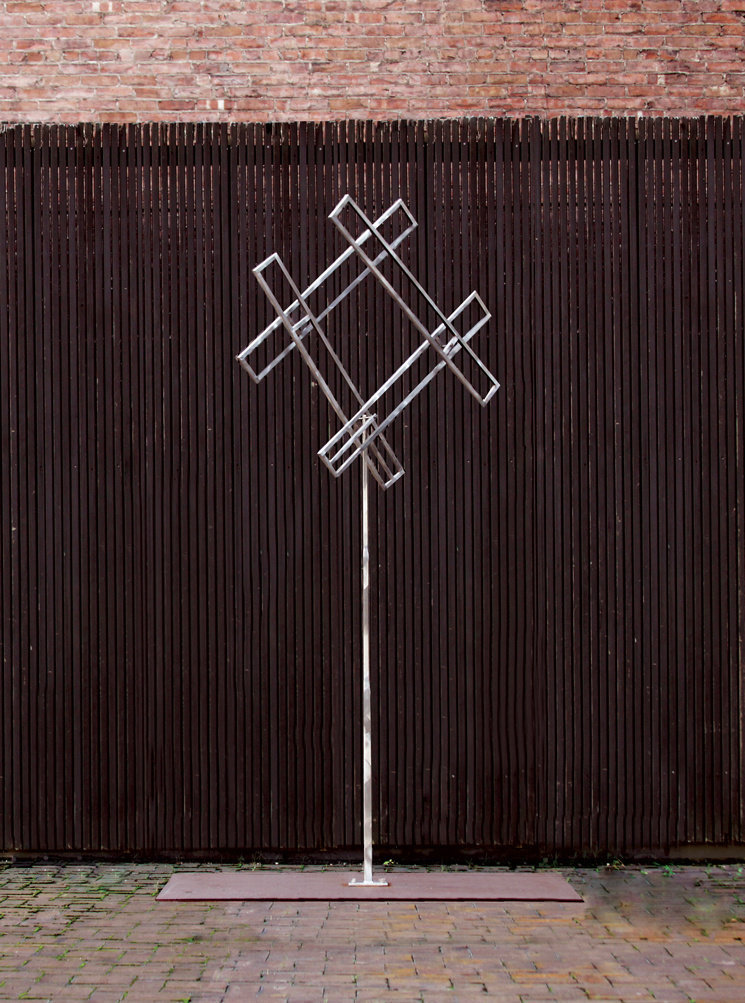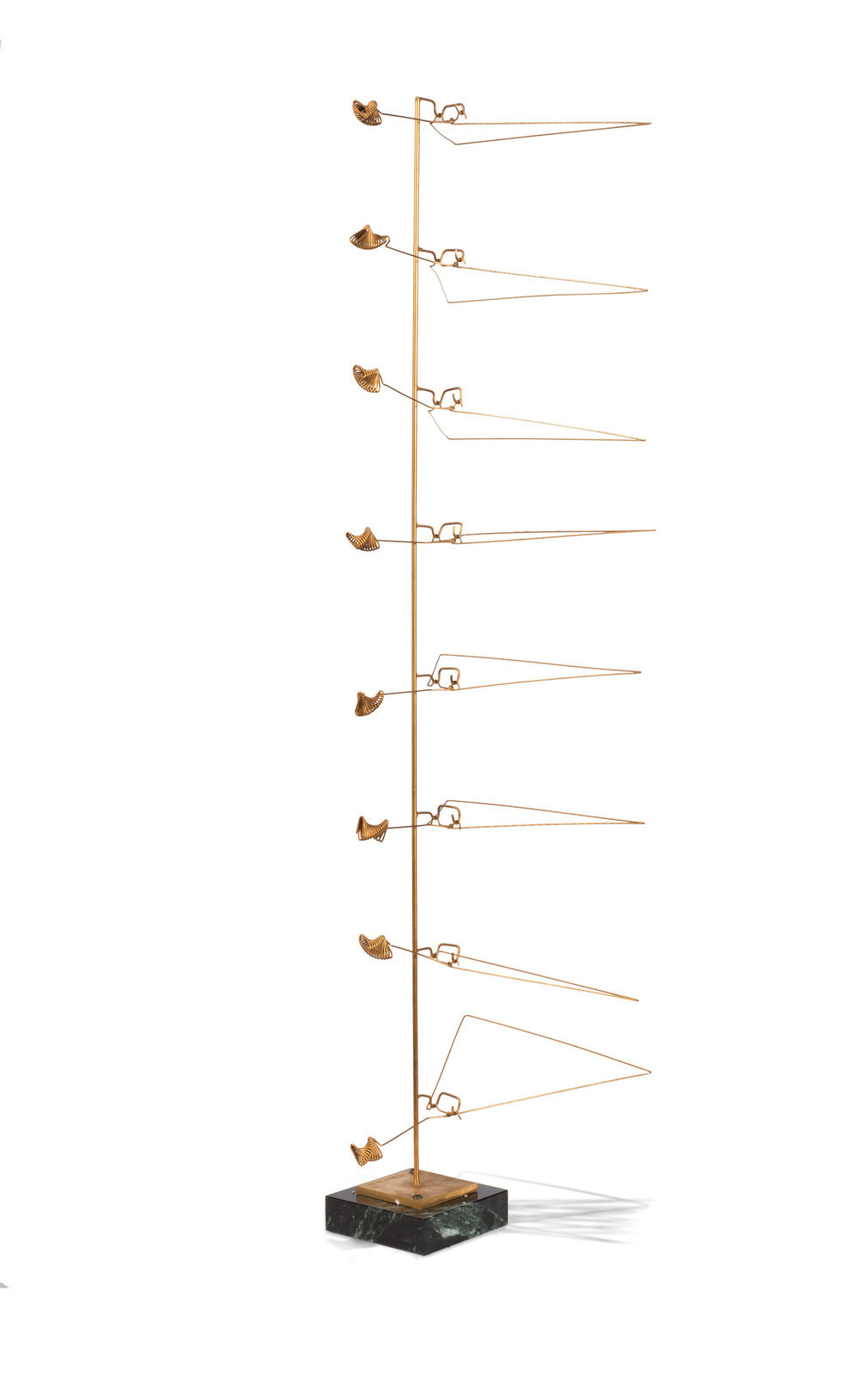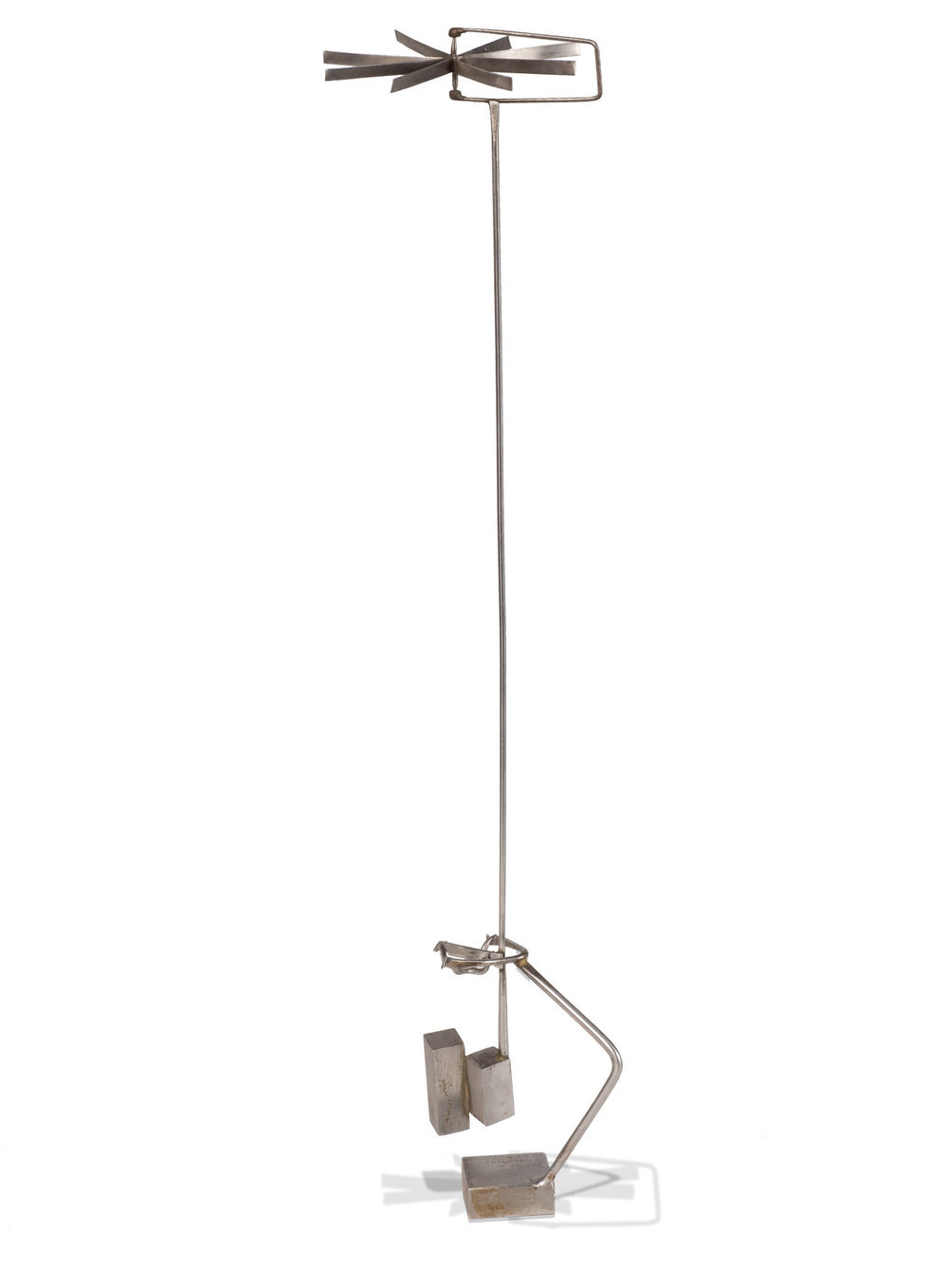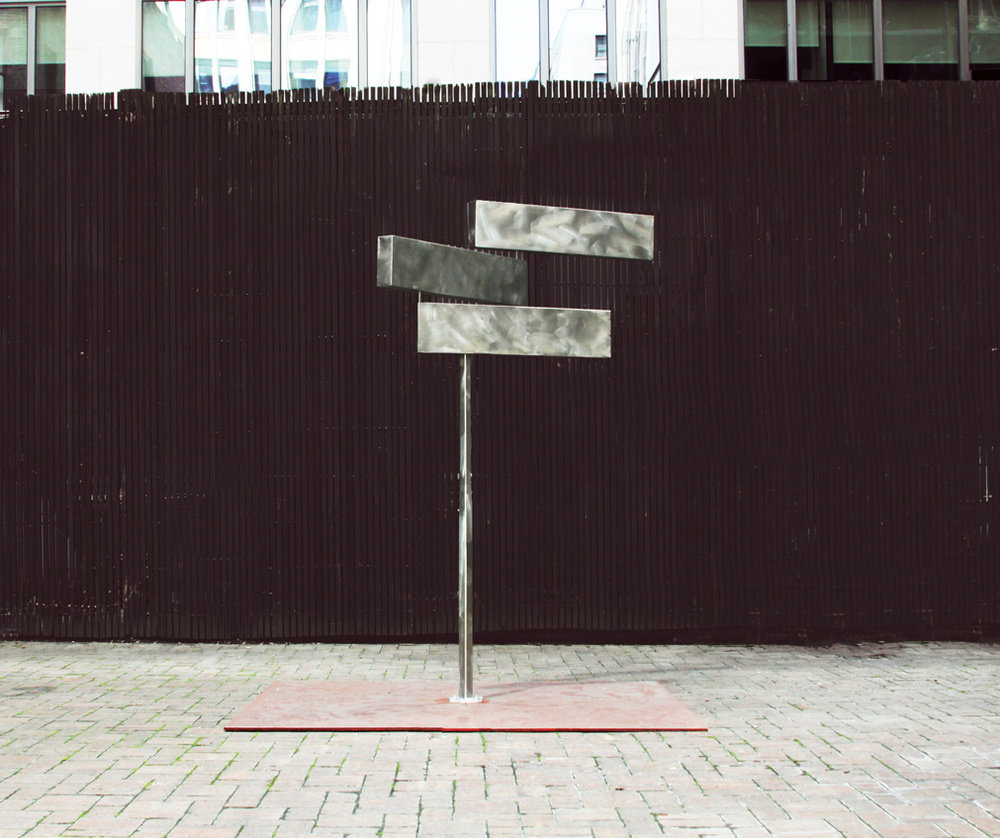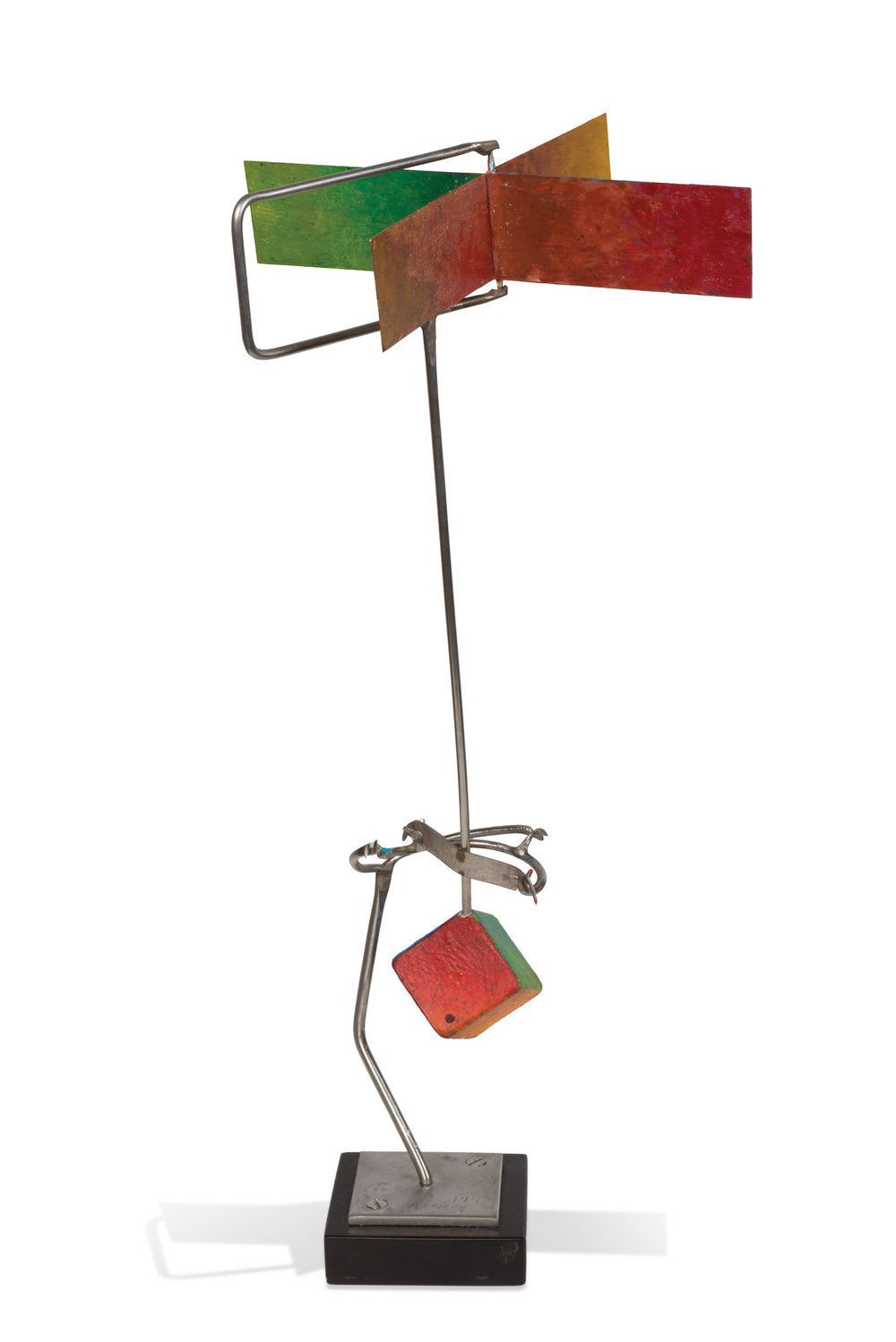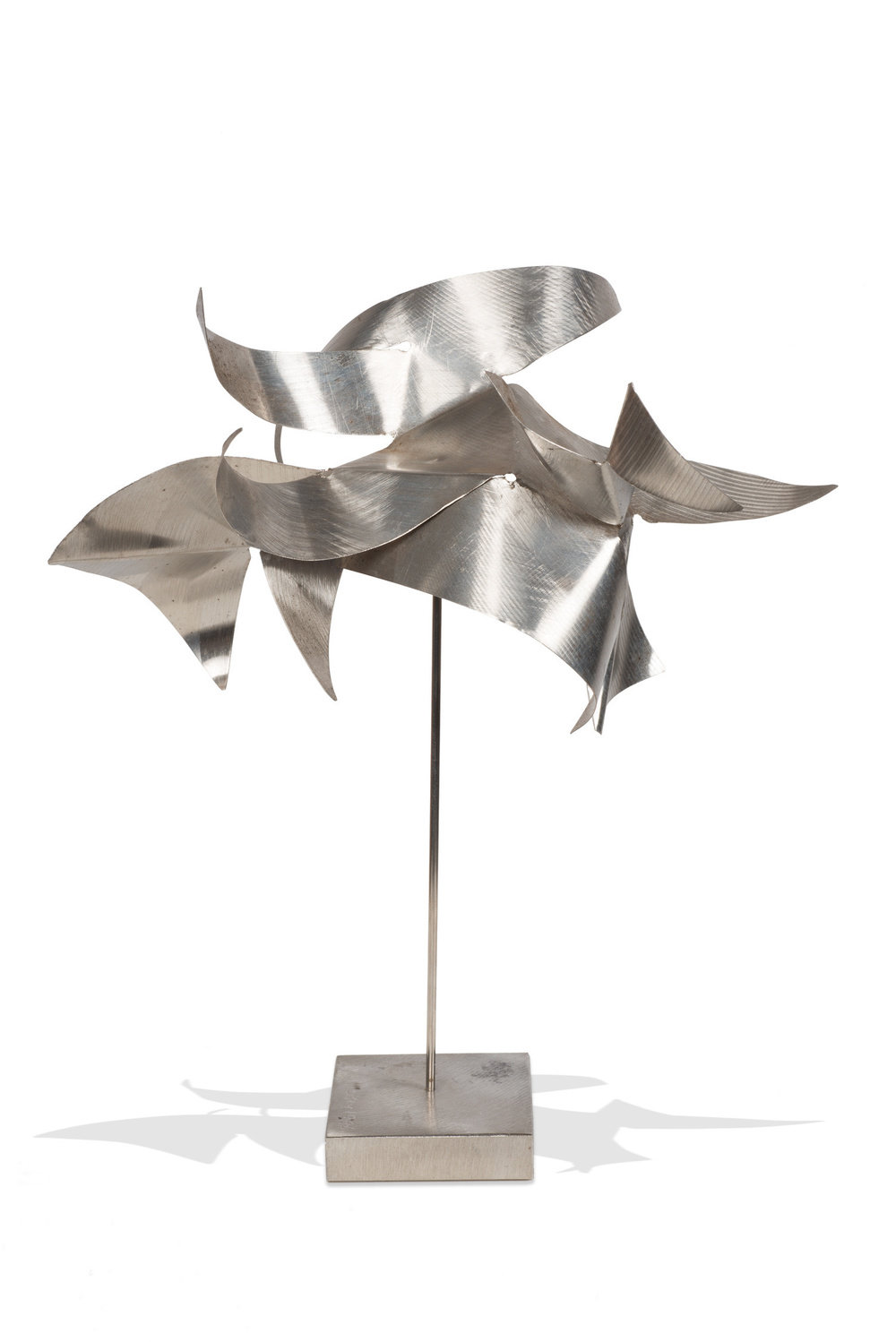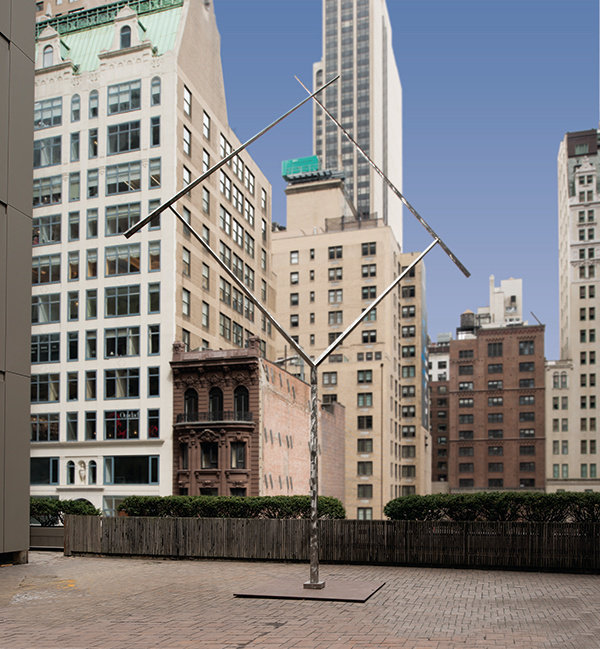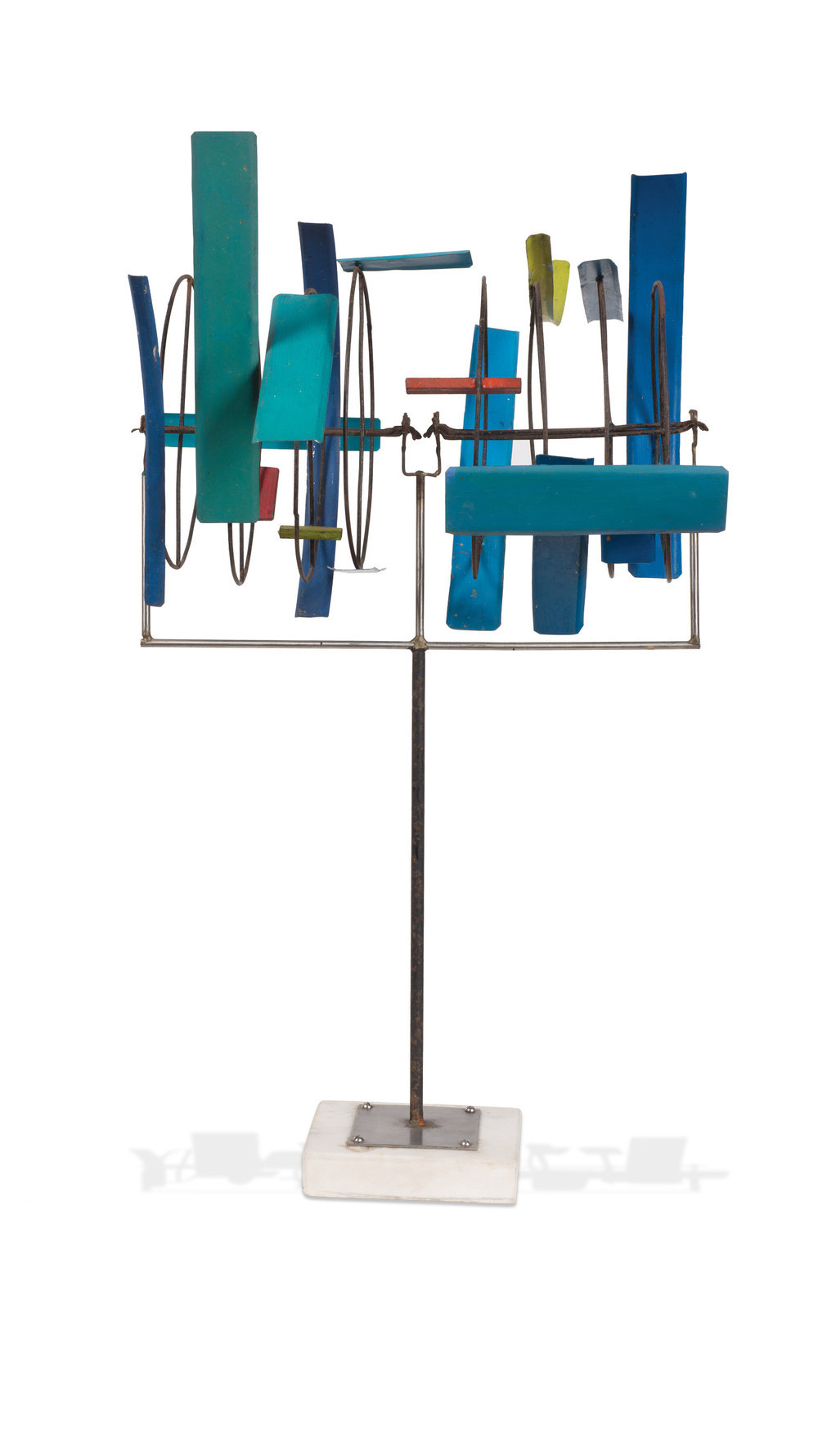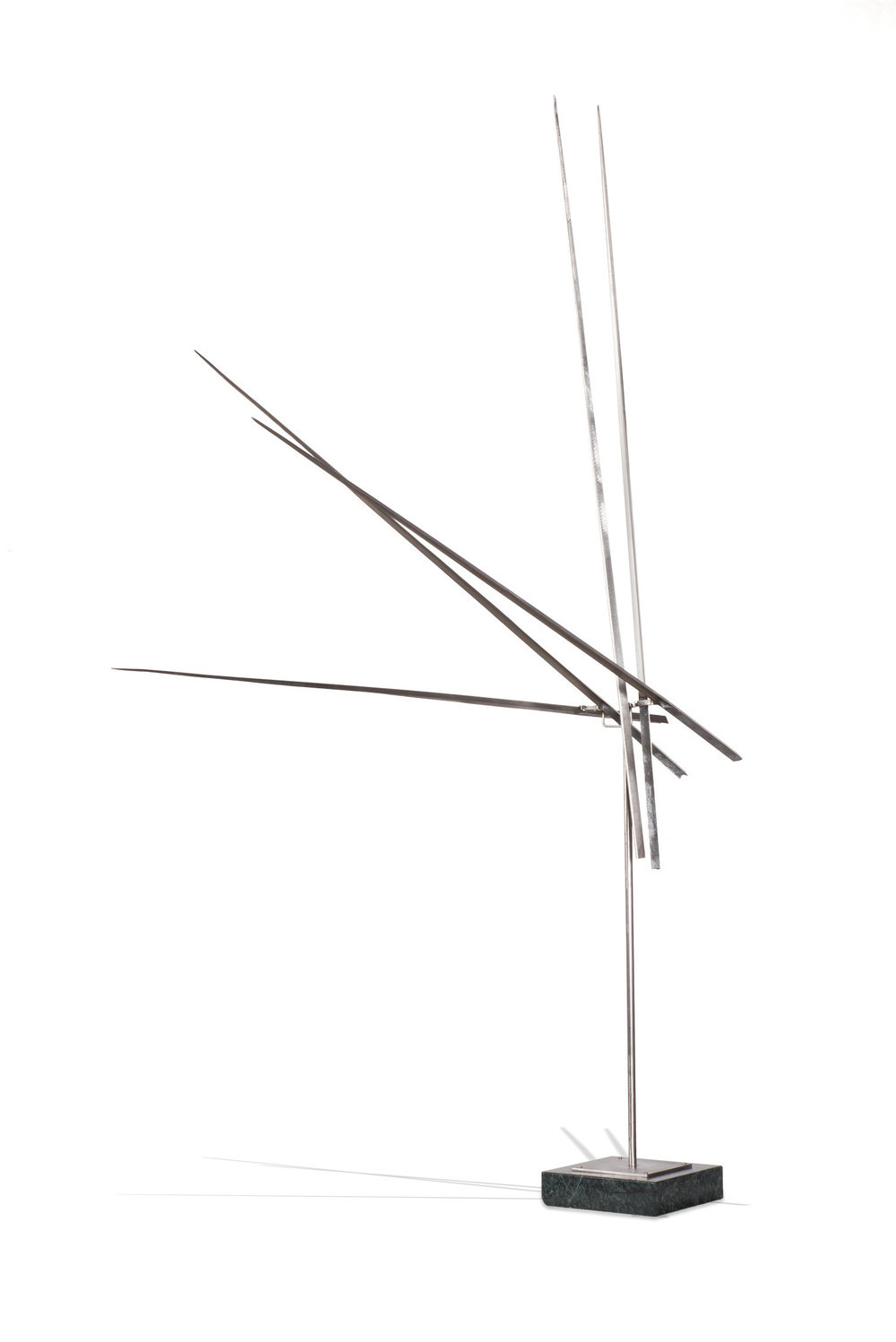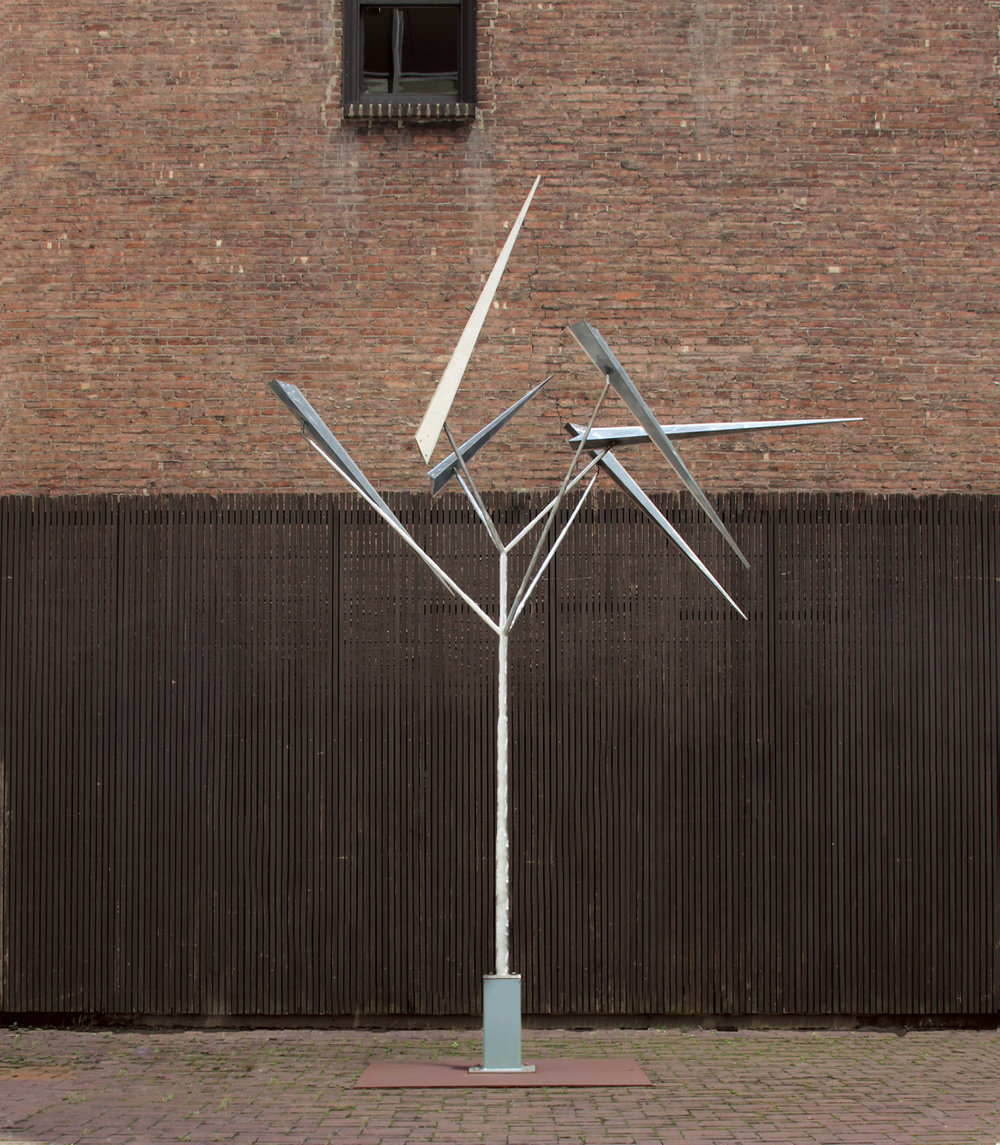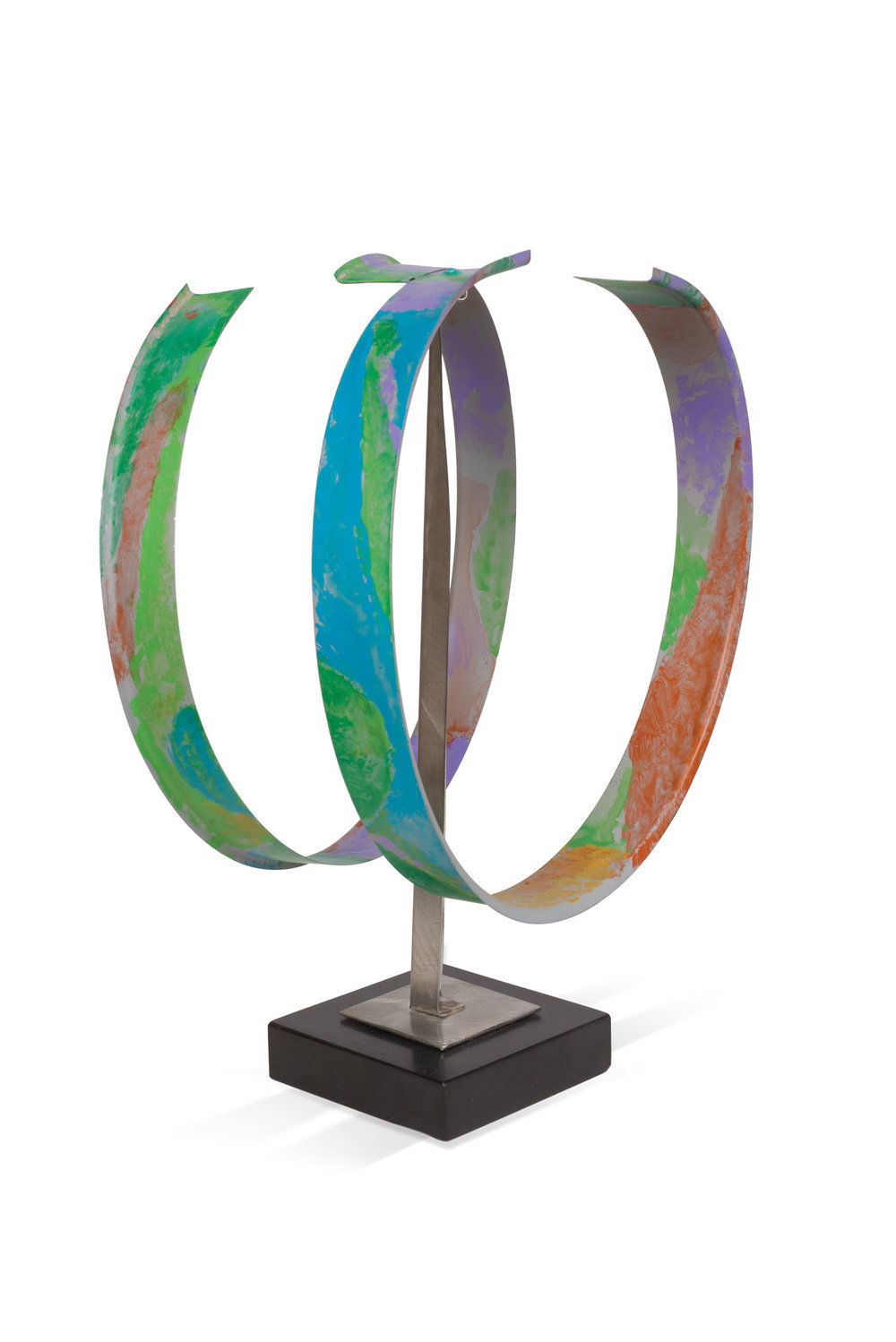Marlborough is pleased to announce that a major exhibition of works by George Rickey. The exhibition will feature 18 indoor, stainless steel sculptures, including unique polychromed and gilded works, and will continue onto the gallery’s terrace with 9 garden-scale works. From the private holdings of the George Rickey Estate, the exhibition covers the spectrum of Rickey’s distinctive sculptural voice and offers further insight into his expansive creativity, as many of the pieces are on public view for the first time.
George Rickey is among the most inventive and influential sculptors of the twentieth century. His iconic kinetic works are the outgrowth of experiments with wire and metal that began during his service in World War II. By the late 1950s and 1960s he reduced sculptural forms to simple, geometric shapes such as rectangles, trapezoids, cubes, and lines. Rickey, along with Alexander Calder, introduced the notion of kinetic sculpture (sculpture capable of motion) to America in the mid-twentieth century. Rickey was the first to create work specifically for outdoors, and became famous for braised and polished stainless steel sculptures of geometric forms that respond to the action of air currents.
This exhibition spans the entirety of Rickey’s oeuvre and features works that held special significance for the artist. According to George Rickey’s son Philip, during his career his father placed certain works in his own archive. Comprised of sculptures from his early development or first examples of editions that he wanted to reflect upon during his daily routines at home and in his studio, they were designated as “zeros,” Rickey’s form of an artist proof, and served as inspiration for future projects. Included in the exhibition are such experimental works as Orenary (Space Churn Theme), 1955 and Plumage, 1957, two table-top, polychromed sculptures which reveal Josef Albers’ influence upon the artist. The hard lines and exact forms that Albers used bespoke a strict discipline of construction, and his color strategy introduced Rickey to a method that resonated with his developing theory on movement. Albers’s influence became more prominent as Rickey focused on the abstract quality of the shapes and color relationships within his three-dimensional compositions.
In a later interview, Rickey described the correlation he saw between color and movement:
“Motion, which we are all sensitive to, which we are all capable of observing without having to be taught, is a sensation that appeals to the senses just as color does. It has an equivalent of the spectrum, different kinds of types of motion. I think that one can, to a very considerable extent, isolate motion as a visual component and design with that.”
The artist’s creative exploration of motion is exemplified in the outdoor sculptures which comprise the largest grouping of the artist’s monumental and garden scale works to be exhibited together in New York City. As mentioned previously, Rickey was influenced and inspired by other artist’s work. Several of the garden-scale sculptures reflect Rickey’s interest in Japanese prints, in which the partial views seen through rectangular windows and doors influenced him to create “open rectangle” sculptures, and then, subsequently, a series of “open” geometric forms. In his essay for the exhibition catalog, Philip Rickey explains, “the resultant emerging views of rectangles crossing and reframing the world, as seen through the stainless steel aperture, parallel the narrow Japanese scenes, where the inside and the outside worlds intersect through an open door.” Four Open Rectangles Diagonal Jointed Gyratory V, 1995-2004, Oblique Column of Twelve Open Squares, 1977,and the spectacular eight-foot Annular Eclipse V, 2000 illustrate both the use of open rectangles in the artist’s lexicon as well as his evolution into other “open” geometric forms.
George Rickey’s continued pursuit of artistic exploration until his death grew out of his need to create. As Phillip Rickey writes of his father’s works, “when considered as a group, one can marvel at the ongoing creative spirit that continued, under all conditions, to invent.”
Rickey received honorary doctorate degrees from nine institutions. He was elected to the National Institute of Arts and Letters in 1974 and received the Gold Medal for Sculpture from the American Academy of Arts and Letters in 1995.
George Rickey’s works can be found in major museums throughout the world, including: The J. Paul Getty Museum, Los Angeles, CA; Solomon R. Guggenheim Museum, New York, NY; Hara Museum of Contemporary Art, Tokyo, Japan; The High Museum of American Art, Atlanta, GA; Los Angeles County Museum of Art, Los Angeles, CA; The Metropolitan Museum of Art, New York, NY; The Museum of Fine Arts, Dallas, TX; The Museum of Modern Art, New York, NY; The National Gallery, Edinburgh, Scotland; The National Gallery of Art, Washington DC; New Orleans Museum of Art, New Orleans, LA; Ruckversicherungs- Gesellschaft, Munich, Germany; Tate Gallery, London, England, and the Whitney Museum of American Art, New York, NY. An illustrated catalog with an essay by Philip Rickey will accompany this exhibition.
Works
